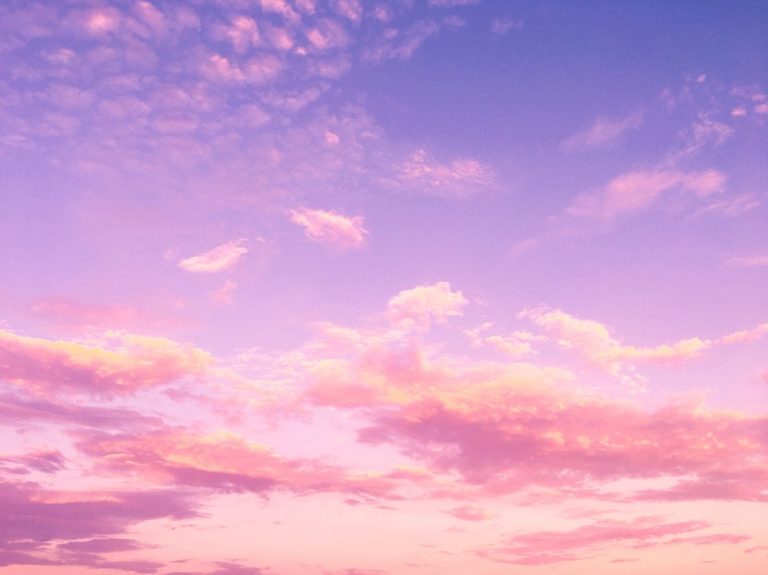Want to see and share the world with your camera? We 5 questions about travel photography to get you started.
It sounds amazing, doesn’t it? Visit beautiful locations all over the world! Shoot pictures for profit! Yellowstone. Paris. Kenya. The Galapagos. Moscow. Quito. The Carribean. How does it all work, this travel photography gig? If travel photog is on your business bucket list, here are some ideas on how to get started.
#1. What is Travel Photography?
Tourism is big business across the globe. The travel and tourism industry, in fact, had a global economic contribution of more than 7.6 trillion U.S. dollars in 2016. Travel and tourism supports more than 118 million jobs worldwide, or about 3.8 % of the population.
Travel photography is essentially commercial photography that promotes the ever-growing tourism industry. A travel photographer usually provides images that support travel and tourism in some way. The client may be a travel agency, tourism bureau, travel blog or resort. You might also shoot for a city or state agency or another vendor with ties to tourism.
Other travel photographers work more as photojournalists. Their assignment is often to simply document cultures and locations. They share a greater message than “come visit us!” These photographers capture images in the name of education and outreach. Think photographers for National Geographic or the Smithsonian. They aren’t trying to get you to book a cruise to the Antartic, but do get paid to go on location and shoot stunning images.
#2. How much money does a travel photographer make?
Opportunity abounds in this market. But the facts are, you won’t get rich quick. If at all. There’s a lot of competition out there and staff jobs with salary and benefits are few and far between. How much money you make depends on what kind of travel photographer you become. Do you want to freelance for different businesses and agencies? Work as a photojournalist for a magazine? Take a staff job with a travel agency? Start your own travel blog and sell sponsorships?
Travel photography is competitive. Let me say that again. Travel photography is competitive. I mean who doesn’t want to get paid to take pictures? It’s important to have realistic expectations heading into this. There aren’t just hundreds of jobs available. Instead, you’ll have to find ways to make money at this business. Most travel photographers have several income streams. They might freelance for several different magazines at once, license their images to stock photography sites and sign a long-term contract with a specific vendor or agency.
Your income can be as little as a few hundred dollars a month to a few thousand dollars a month. It honestly depends on how hard you work, who your clients are and how you have your business structured.
For a great read on how a working travel photographer earns income, head on over to this article!
#3. How do you become a travel photographer?
Start small.
Unless you have some serious connections, you aren’t going to call from AAA and get a contract to shoot Giant Pandas in China the next week. That’s just not how the travel photography industry operates. You’ll need to build a portfolio of images and a reputation for quality work. Most travel photographers got their start by taking images in their hometowns and then branching out from there. Hone your skills locally and get your work out there. Use your social media accounts and a website to display your work. Explore submitting your images to stock photography sites. Build relationships and partnerships with travel and tourism-related organizations in your local area. Start creating your networks!
Widen the circle.
Take day trips to surrounding cities and locations. Plan weekend excursions and go a little farther yet. I’m not kidding. Get out a map or get on Google and find new places to shoot! Keep a journal of interesting buildings or vantage points to revist at different times of the day. Keep sharing your work and building your audience. If you work at it, you’ll be amazed at how quickly your portfolio and network expands.
One important note here is to give some thought to who might pay for your images. Yes, it’s fun to shoot Grand Teton National Park and all its snowy, peaked glory. But that image has been shot hundreds of thousands of times by hundreds of thousands of people. There’s not a huge market for one more image of the Moulton barn (if you don’t believe me, look it up). Yes, it looks impressive in your portfolio. Friends and family will oooh and ahh over it. But oohs and ahh don’t pay the bills.
Less iconic scenes might actually be more lucrative. Think about restaurants, hotels and excursion vendors. What kind of images might they need and would be willing to pay for? What images does your stock photography site need? My biggest stock photography revenue generator is an image of a cow that looks like its laughing. My second biggest revenue generator is a faded sign along a random path. True story.
Looking for advice on landscape photography? We’ve got the scene!
Parlay family vacations or work trips into portfolio building.
If your spouse gets annoyed by this one, you did NOT hear it from me. But family vacations or other trips can be a wonderful opportunity to practice your photography skills. I recommend planning a wonderful experience for your family first. Then fit in your photography work.
Ditto for work trips. If your employer allows it, you can also carve in some great shooting time on work trips. Sunrises, sunsets, blue hour…most of these happen outside of normal business hours. Take advantage of your situation and practice!
Consider a photography excursion or workshop.
Photography workshops or excursions will cost you money. But they can be a great educational experience for a budding travel photographer. Some of the best travel photographers in the world have figured out they can make a better living teaching travel photography than just shooting travel photography. Paid workshops or excursions mean having a hands-on expert for guidance. Learn where to shoot, how to shoot and how to improve your images. And you aren’t balancing the demands of family and photography. That frees you up to focus solely on producing high quality, portfolio quality images.
Not every workshop needs to cost you $6,000 or $12,000. Often there are day trips offered in your area for a few hundred dollars that provide the same high-quality experience for a fraction of the price. Our local PPA group usually has some sort of travel workshop each year with their annual meeting. For $300, I could have shot astrophotography on location in the Wyoming desert with a pro mentor and comp gear. That’s a pretty amazing opportunity if you ask me!
Pitch your product
Once you have a solid portfolio built, start pitching your product. You might approach hotel chains, tourism boards or city agencies. Show them your work and see if they are interested. You probably won’t get paid for these images. BUT now you have a “sale” to include in your portfolio. And these experiences usually have a snowball effect. Your work gets seen and talked about by people who will be willing to pay you and soon you are turning a profit. Think of these as model calls for the travel industry.
Commercial photography can go hand-in-hand with travel work. Read more about it here!
Find a niche
It’s easy to want to shoot everything when you are first getting started in travel photography. Wildlife! Nature! Cityscapes! Culture! All of it is beautiful and fascinating. But developing a niche and focusing on just one aspect of travel photography will strengthen your skills more quickly. Shoot what you really love and focus on building a network in that area.
#4. Travel Photography Tips
Leave your gear at home
Practice your skills at home. Learn your gear, create good composition, find your style locally. You don’t book a 10 day trip to Antartica and decide on day to you need to master shooting in manual. You need to have mad photography skills first. The travel part comes second.
Make a Plan
If you’re heading out to shoot images, have a plan in mind before you leave the house. Know when to expect golden hour and blue hour. Where the sun will be. Know where the wildlife are or when parks close or what is under construction. Nothing is more frustrating than driving four hours in the car one way to get that beautiful sunset picture only to realize it’s now dark and you’re still 30 minutes from your destination.
Be prepared for the climate and terrain
Please, please, please don’t be an idiot and put yourself in an unsafe situation. Travel photography can be a physically demanding job. Make sure your body and equipment are up to the task of a 10-mile hike into a waterfall. Know how to defend yourself in bear country. Know how to stay safe photographing on the streets at night. Have enough clothing, water and food to survive at least 24 hours in an emergency. And always give someone else your itenarary. They should know when and where to deploy help if you fail to arrive home in time. Put safety first, beautiful images second. One of my favorite-up-and-coming photographers was killed on the side of a busy road trying to capture images of turkeys strutting.
Embrace the blue hour.
Golden hour gets all the press. But blue hour, or that hour after the sun has set, is another spectacular time for shooting. The sun has set and the sky is this beautiful shade of smoky blue. Streetlamps and house lights kick on and cars headlights become visible.
See our ideas on how to freelance for magazines!
#5 – Be ethical.
Being a great travel photographer means respecting the people and places you are photographing. Help conserve these stunning landscapes and cultures. This means staying on the trail in national parks, giving wildlife their space and respecting rules regarding drones. It means being respectful of the local culture and your subjects. Remember we are people, not specimens. Respect boundaries. For more on this topic, check out this great blog post at Erin Outdoors.
Not only is being ethical the right thing to do, it helps ensure we as photographers have access to these beautiful places in the future. It might also mean the difference between making money and losing a client. Don’t get dropped by your sponsor because you were being a jackwagon and destroying the local habitat and ecosystem. Is a shot for your portfolio really worth destroying an ancient Joshua Tree or compromising the integrity of a delicate thermal pool?
#6 – Follow other travel photographers
If you’re looking for some inspiration or guidance, go where the travel photogs are. Follow them on social media and read their blogs. You can see beautiful images, get free advice and learn what gear they use in the field. Find Facebook groups or blogs dedicated to travel photography, too. Use their knowledge and experience to help improve your work.
Here are a few of my favorites:
- @chamiltonjames – National Geographic Photographer and fellow Charlie Hamilton James. This guy makes rats in New York City look epic.
- @shainabloomphotography – Michael Shainblum is a master of landscape photography.
- @chrisburkard – Chris Burkard is a great example of finding a niche and making it your own. He focuses on surfing pictures. Just in really unexpected places.
- @afarmedia – this isn’t one photographer, but an account that posts different photographers shots. I love that it’s not all sweeping vistas and sunsets. There are messy markets, quirky cactus and abstract amazements, too.
- @chelseakauai – Chelsea’s IG feed feels less like a travel photog account and more like pictures of my BFF on vacation. If my BFF was an amazing photographer with an eye for light. And not afraid of heights.
- The Wandering Lens – Join Lisa to explore new adventures, get travel tips and learn to photograph like a pro.
- Travel Photography Guru – Glenn Guy is the guy when it comes to helping you learn about travel photography. He talks about gear, editing and workflow, and does it all with a straight-forward approach I really enjoy. And his quirky logo and goofy faces make it a fun place to stop in and visit.
- Polkadot Passport – Nicola Easterby’s vibe is a little dark and moody and definitely more young, edgy and girly. She’s changing what it means to be a travel photog for the better!
Final Destination
Travel photography can be an amazing way to combine your wanderlust to see the world with your love of photography. But becoming a successful travel photographer won’t happen overnight. Be prepared to work at your craft and pay your dues. Work your networks and your next trip may come on someone else’s dime!










